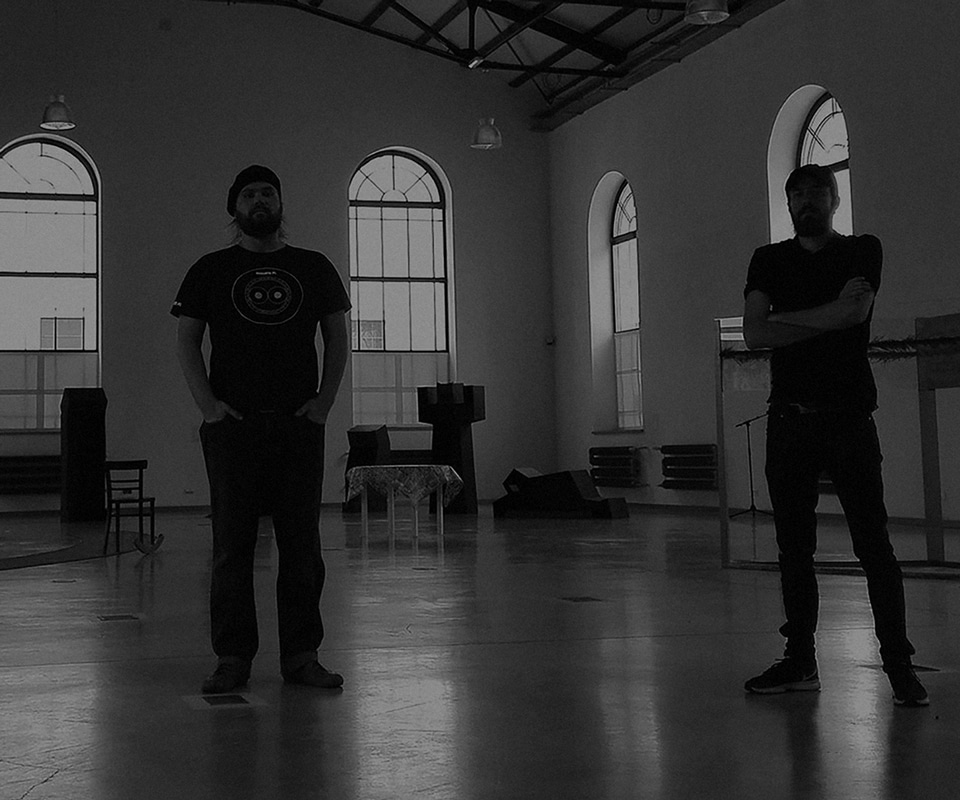There are several main dimensions to consider when speaking of the origin of Piotr Damasiewicz – Into the Roots, all defined in the name of the project itself.
Ethnicity and natural expression, the context of a given place and its spirit as well as cultural aspects – these are the elements necessary to understand the specificity of this project.
One can recall facts about events significant for Into the Roots and thus classify them as moments when it all started. Still, this is quite a conventional chronological order. Into the Roots was officially brought to life in Norway. From the very first moment it constituted a return to the roots, as the entire load of improvisation, indigenous feeling and groove stemmed from the mood and artistic attitude that Piotr Damasiewicz, Zbigniew Kozera and Paweł Szpura had had long before that stage. It is therefore more appropriate to talk about the extraordinary genesis beyond time, with no particular beginning nor end, where the place the musicians are at affects them.
The musical connection among the trio was also definitely influenced by the fact of their common fascination with African music and their experience with land of the Sahara. All of them – Zbigniew, Paweł and Piotr – were freshly after their musical journeys to Tanzania, Zanzibar and Morocco. Then in the pastoral atmosphere of the Stavanger fjords, thanks to Monika Cichocka, Piotr Damasiewicz played the first concert with Into the Roots in the spirit of an alliance between avant-garde and ethnicity. The chime of bells, sounds made by sheep and the wind blowing turned out to be the analogy of improvisation in the undefined shape of beauty, which has always been dear to Piotr Damasiewicz. For him, the uniqueness comes from the indigenousness of what lies within. Places where one can experience that „core” very quickly become special to him, just like in case of Sucha Beskidzka.
Significant for Into the Roots, Sucha Beskidzka was first visited by Piotr Damasiewicz many years ago, in 2006:
‘At that time I studied in Katowice. My friends, who had already been in Sucha, told me about Cofeina Jazz Café and recommended this club. They were right – great atmosphere had had prevailed at that place for a long time. Back then, it was run by Bogdan Fałowski, the founder. Today, Cofeina Jazz Café keeps going and is not only a jazz café and club, but also a place for art and artistic events,’ he says.
When in Śpiwle, Piotr Damasiewicz met one of the inhabitants, Wiesław Francuz, nickname ‘Vinczu,’ who has musicians from all over the world among his friends. In Piotr’s words, ‘He invited us to be his guests and we became friends quickly. As a host he made sure that we weren’t missing anything. At his place I met jazz and folk musicians, I also played with artists from the Sucha County. They taught me traditional melodies in the meantime becoming more and more familiar with jazz. It was then when my dream of recording an album combining jazz with highland, pastoral tunes was born.’
Piotr’s idea was put to practice. The musicians involved met and recorded the album at the house which used to belong to Vinczu’s grandfather, and later became owned by Wiesław’s friend, Kasia Wysoczyńska. On bagpipes and pipes, among the artists engaged in the project was Jan Ryt from Sucha Beskidzka.
‘On the album you can hear a bit of Norway, a bit of Africa, including Morocco and Tanzania, and Polish mountains,’ says Piotr Damasiewicz. Since the album was recorded in Śpiwle (housing estate), it took name after the place. The songs from Śpiwle have been present on numerous radio stations, and the work was chosen the album of the year both by the listeners of RadioJazz.fm station and readers of Jazzpress monthly.
Damasiewicz would get to know more and more musicians from Sucha Beskidzka belonging to local traditional highlander bands, one of the occasions being joint carol singing at Mr. Stanisław’s. Mr Stanislaw is one of the musical guardians and mentors of the region and it was at his place where Piotr met three sisters – Natalia, Kamila and Alicja Krzeszowiak – and the Ryt family – Jan, Paweł and Krzysztof – all of who are musicians of Ziemia Suska and Mała Ziemia Suska regional bands.
‘After the release of Śpiwle, I felt that it was time to broaden my sound horizons and delve deeper into the ethnic and folk musical dimension, meaning, expanding the line-up with singing and string instruments and introducing more musical content which will no longer be just an addition, but largely a starting point and a substantial component of the whole. This is how the double album WATRa was created. I wanted to refer to the custom of making music the way it was traditionally done – in mountain cottages – and teleport such music to a jazz club, a natural habitat for jamming as well. The music from Babia Góra and its surrounding towns has been combined with jazz and the sounds of the world that accompanied me during my many years of travel. ‘


























